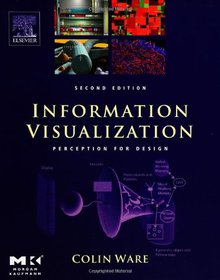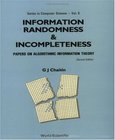Information Visualization
Perception for Design
2nd Edition

Book Details:
| Publisher: | Morgan Kaufmann |
| Series: | Morgan Kaufmann |
| Author: | Colin Ware |
| Edition: | 2 |
| ISBN-10: | 1558608192 |
| ISBN-13: | 9781558608191 |
| Pages: | 486 |
| Published: | Apr 21 2004 |
| Posted: | Nov 19 2014 |
| Language: | English |
| Book format: | |
| Book size: | 37.54 MB |
Book Description:
Most designers know that yellow text presented against a blue background reads clearly and easily, but how many can explain why, and what really are the best ways to help others and ourselves clearly see key patterns in a bunch of data? This book explores the art and science of why we see objects the way we do. Based on the science of perception and vision, the author presents the key principles at work for a wide range of applications--resulting in visualization of improved clarity, utility, and persuasiveness. The book offers practical guidelines that can be applied by anyone: interaction designers, graphic designers of all kinds (including web designers), data miners, and financial analysts. *First work to use the science of perception to help serious designers and analysts optimize understanding and perception of their data visualizations.* Major revision of this classic work, with a new chapter on visual thinking, new sections on face perception and flow visualization, and a much expanded chapter on color and color sequences. *New to this edition is the full color treatment throughout, to better display over 400 illustrations.
Download Link:
Related Books:
Information, Randomness and Incompleteness
Papers on Algorithmic Information Theory
2nd Edition
God not only plays dice in quantum mechanics, but even with the whole numbers! The discovery of randomness in arithmetic is presented in my book Algorithmic Information Theory published by Cambridge University Press. There I show that to decide if an algebraic equation in integers has finitely or infinitely many solutions is in some cases absolutely intractable. I exhibit an infinite series of such arithmetical assertions that are random arithmetical facts, and for which it is essentially the case that the only way to prove them is to assume them as axioms. This extreme form of Gdel incompleteness theorem shows that some arithmetical truths are totally...
Uncertainty and Information
Foundations of Generalized Information Theory
Deal with information and uncertainty properly and efficiently using tools emerging from generalized information theoryUncertainty and Information: Foundations of Generalized Information Theory contains comprehensive and up-to-date coverage of results that have emerged from a research program begun by the author in the early 1990s under the name "generalized information theory" (GIT). This ongoing research program aims to develop a formal mathematical treatment of the interrelated concepts of uncertainty and information in all their varieties. In GIT, as in classical information theory, uncertainty (predictive, retrodictive, diagnostic, prescriptive, and the like) is viewed as a manifestation of information deficiency, while information is ...
Global Information Society
Operating Information Systems in a Dynamic Global Business Environment
2007 - 2021 © eBooks-IT.org



